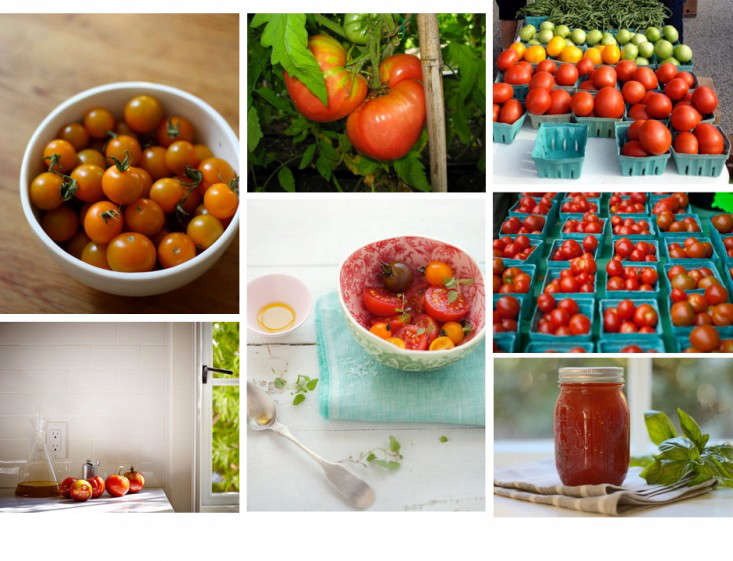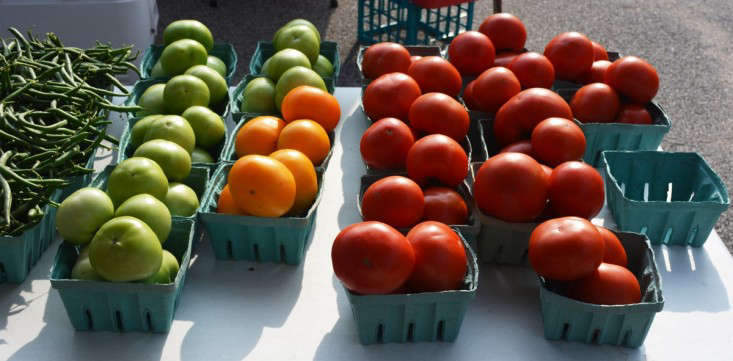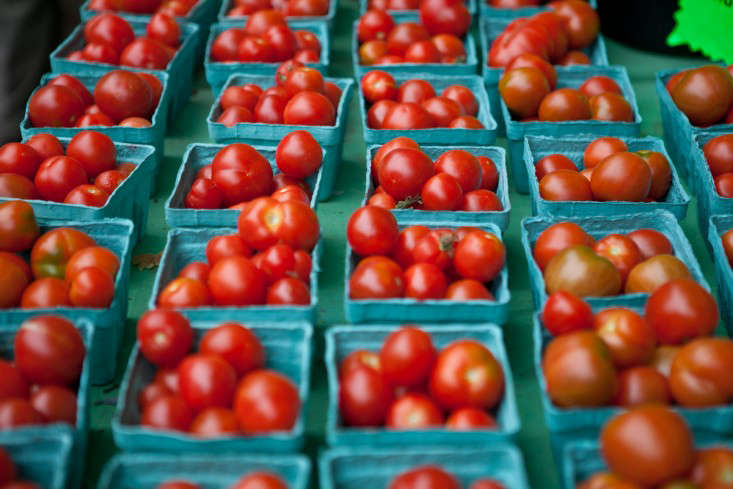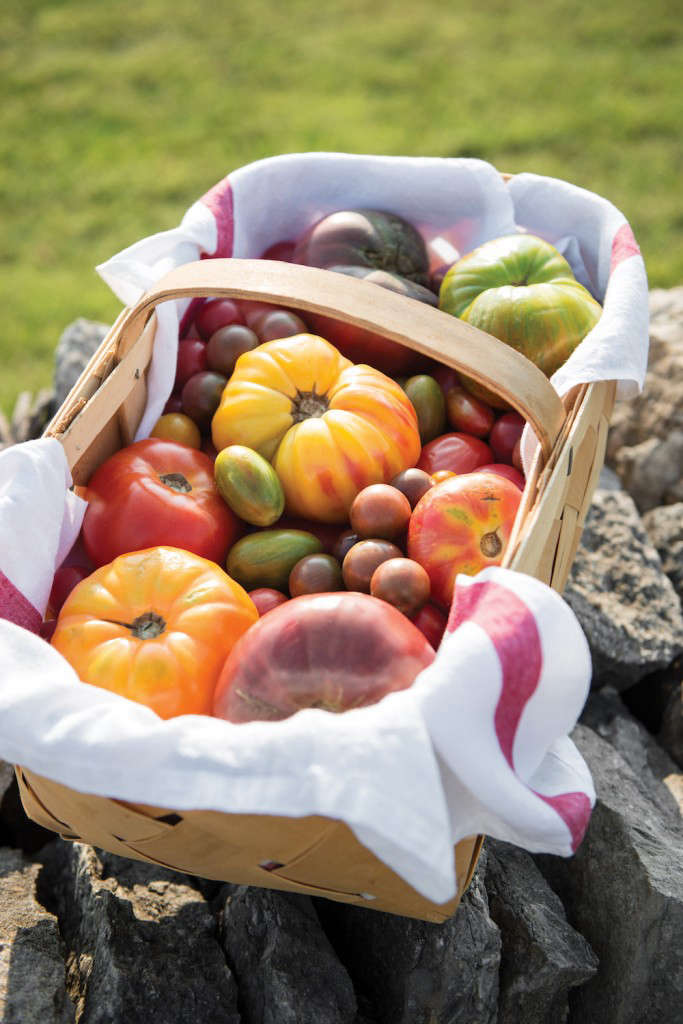Tomatoes: “Wolf Peaches”
Tomatoes are something like that co-worker who sweetly wears pencil skirts and cardigans, and is all sunshine and timely expense reports. Then she starts telling you about the motorcycle she just bought and the skydiving lessons that are her New Year’s resolution. Tomatoes, like her, have a dark side. They’re in the nightshade family, after all, kin to the traditional witchy plants, foxglove, and belladonna.
Tomatoes bewitch most gardeners too, with their beautiful vines and plentiful fruit. But they also require plenty of sunlight, regular irrigation and fertilization, and, most important, the right timing. Seasoned gardeners generally have their own laundry list of tricks and tips, and I am no exception. Below, my advice for novice tomato growers:
Above: Leave nothing to chance. If you plan to start tomatoes from seed, check with neighbors or local extension agents to get the exact right time for your region. Plant too soon, and your seedlings will have outgrown their pots more than once before the weather warms up. Too late, and you’ll still have green plants in August.
Above: Photograph by Ron Reason for Gardenista.
More than 7,500 varieties of tomatoes exist. There are a number of ways to narrow the options: Choose between cherry, plum, or regular-sized fruit. Decide on bush or staking plants. If you want to get the whole crop of fruit at once, pick the determinate variety. For a harvest period that extends over several weeks, get indeterminate. Finally, select for length of growing period: for cold climates, the earlier the better. Once you find a perfect fit, be aware that tomato plants can be prolific, so choose sparingly and plant just a few seeds of each variety. (For more photos and recipes for Tomatoes, see our Gardenista Gallery.)
Above: Photograph by Todd Porter and Diane Cu.
On indeterminate tomato plants, the fruit ripens one by one, rather than all at once. For the best harvest, you’ll need to snap or snip off the suckers–the lighter-colored vines that sprout between the V’s made by the leader branches. Removing the suckers sends energy down the main vines.
Above: Photograph by Laura Edwards. For more, see Required Reading: Kitchen Memories by Lucy Boyd.
Cheat Sheet
- Treat tomato plants as an ornamental, interplanting them with flowers in your garden. Why not take advantage of the plant’s beauty–the pale yellow flowers and dark green foliage, not to mention the fruit, in so many shades of green, red, yellow, purple, white, black, and pink?
- The tomato’s delicate nature makes it a perfect choice for backyard gardens. Home-grown fruit fresh off the vine is far tastier than the grocery-store variety. You lose flavor even during the journey from the farmer’s market to home.
- The tomato plant’s flowers and fruit attract pollinators, and the dark green foliage sets off any flower bed beautifully.
Above: Photograph by Michael A. Muller for Gardenista.
Keep It Alive
- Side-dress your tomato plants with compost in spring when they blossom, and again after they start to set fruit. That makes the plants resilient enough to withstand chilly temperatures on late-summer nights.
- Live in a cold climate? Stick with cherry and plum varieties, choose heirloom seeds bred for early yield and cold hardiness, and time your starts so they’ll be ready when the ground thaws and temperatures warm–not before.
- Don’t sneeze at container gardening. Especially with cherry varieties, you can grow very tasty tomatoes indoors.
Above: Photograph by Laura Silverman for Gardenista.
A bit of history: The original tomato gardeners, Mesoamerican people like the Aztecs and Pueblos, ate tomatoes cooked, and believed the seeds could aid in divination. Following colonization, the seeds of those plants slowly spread across continents, meeting resistance in some places. Tomatoes are now a staple of cuisines from South America and North America all the way to North Africa.
Above: For one of our favorite easy tomato recipes, check out Irresistible Vegetable Soup in 30 Minutes or Less. Looking for a good summer salad? See Summertime Delicacies: Corn and Tomato Salad. Photograph by Erin Boyle.
Above: Ready for dinner? See Julia Reed’s tomatopalooza recipes in Required Reading: Julia Reed’s South. Photograph by Paul Costello, courtesy of Rizzoli.
Planting a summer garden? Read about more of our favorite edibles, including Carrots, Chives, and Rosemary in our Field Guide archive.
Finally, get more ideas on how to successfully plant, grow, and care for tomatoes with our Tomatoes: A Field Guide.
Interested in other edible plants for your garden? Get more ideas on how to plant, grow, and care for various edible plants (including flowers, herbs and vegetables) with our Edible Plants: A Field Guide.

















Have a Question or Comment About This Post?
Join the conversation